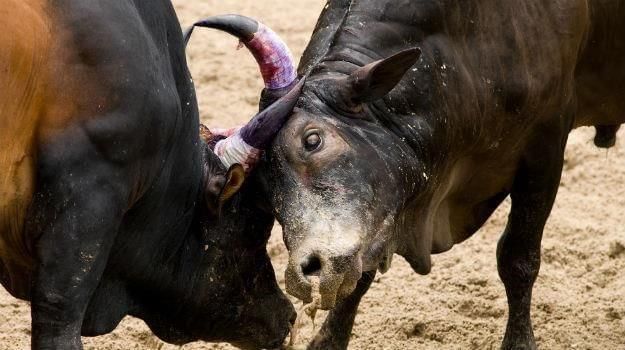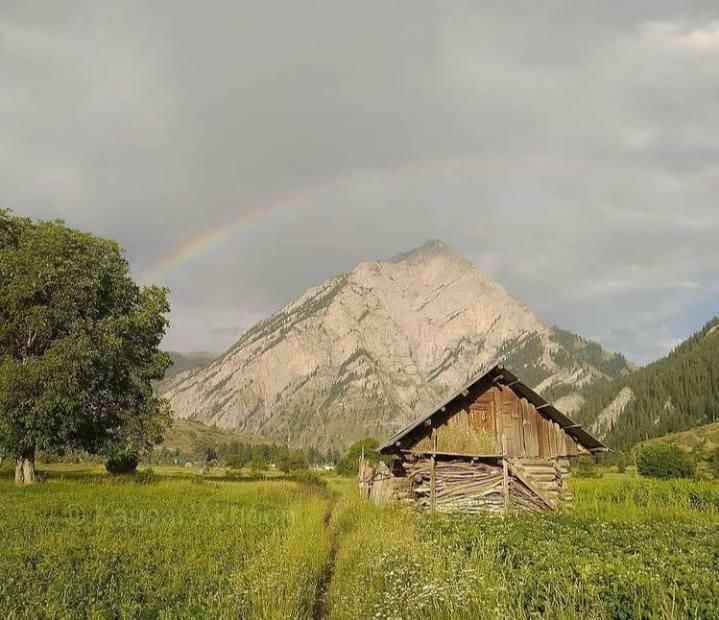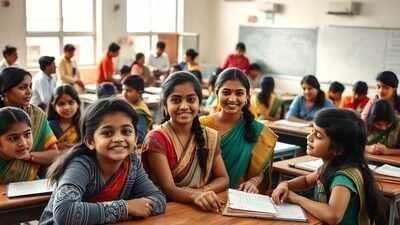Indian Society and Social Issues: August 2025 Current Affairs | General Test Preparation for CUET UG - CUET Commerce PDF Download
GS1/Indian Society
Understanding India’s Internal Diasporas
Why in News?
The concept of 'diaspora' has evolved significantly since the High-Level Committee on the Indian Diaspora report (2001-02). While much attention has been given to India's international diaspora, estimated at over 30 million, the term must also encompass internal migrants, reflecting a broader understanding of diasporic experiences that cross significant cultural boundaries within the nation.
Key Takeaways
- Internal diasporas encompass historical and recent migrations that create lasting cultural and linguistic communities.
- Research indicates that India's internal diaspora exceeds 100 million, surpassing the international diaspora in scale.
- Language preservation is a key aspect of diasporic identities, although it tends to weaken over generations.
Additional Details
- Internal Diaspora: This refers to the movement of people within India that creates diverse cultural identities, such as the presence of over 60,000 Gujarati speakers in Madurai, Tamil Nadu, despite few recorded migrants.
- There are significant clusters of communities, such as the Telugu diaspora in West Bengal and Maharashtra, which highlight the deep-rooted connections formed through internal migration.
- Communities sustain their identities through associations and festivals, such as Bengali groups celebrating Durga Puja and Gujarati Samaj organizing cultural events.
- Challenges of integration and intergenerational conflicts are evident in both internal and international migration scenarios.
- Viewing diasporas through the lens of linguistic dispersion reveals the interconnectedness of Indian communities, with internal migration often preceding international migration.
In conclusion, India's internal diaspora is a vital aspect of its cultural and linguistic landscape, representing a significant population that shapes customs, cuisines, and cultures both within the country and abroad. Understanding these internal movements is crucial for a comprehensive view of the Indian diaspora experience.
GS1/Indian Society
Dhirio-Bull Fighting
Why in News?
Recently, legislators from various political parties in the Goa Assembly have called for the legalization of bull fighting, a local tradition known as Dhirio.
Key Takeaways
- Dhirio is an integral aspect of Goa's cultural heritage.
- The event is traditionally held after the harvest season.
- It has a long-standing history, dating back to the Portuguese era.
Additional Details
- About Dhirio: Bull fighting, referred to as dhirio or dhiri, is a popular event in Goa. It takes place in paddy fields and football grounds, where village shepherds bring their bulls to compete.
- These events are a significant part of local festivities, often being included in church festivals where villagers gather to watch.
- A typical bull fight involves two bulls charging at each other, locking horns, and engaging in head-butting while trainers provoke them from behind.
- Current Status: In 1997, the High Court directed the state to take immediate action to ban all forms of animal fighting, including dhirios.
This ongoing debate reflects the cultural significance of bull fighting in Goa, as advocates argue for its preservation against legal challenges.
GS1/Indian Society
Kerala’s Muthuvan Tribe
Why in News?
The Muthuvan Adivasi Samudaya Sangam has organized a convention to commemorate the International Day of the World’s Indigenous Peoples, highlighting the cultural and social issues faced by the Muthuvan community.
Key Takeaways
- The Muthuvan tribe is recognized as a Scheduled Tribe (ST) in the Anaimalai Hills, spanning Kerala and Tamil Nadu.
- They have a population of approximately 15,000 to 25,000 and are among the least educated tribes in Kerala.
Additional Details
- Location: The Muthuvan tribe primarily resides in the Idukki, Ernakulam, and Thrissur districts of Kerala, as well as parts of Tamil Nadu.
- Etymology: The name "Muthuvan" translates to "one who carries weight on the back," a reference to their historical migration from Madurai with children and royal burdens.
- Origins: The tribe's roots can be traced back to the Pandya Kingdom and they are divided into two dialect groups: Malayalam Muthuvan and Pandi Muthuvan.
- Settlements: They live in "Kudis," which are traditional homes constructed from reeds, leaves, and mud, located deep within the hill forests.
- Governance: The tribal community is organized under a Kani System (village headman) and Chavadis (dormitories for unmarried youth).
- Language: The Muthuvan language is a Tamil-related dialect that is currently endangered, with efforts underway for its preservation.
- Livelihood: Traditionally engaged in shifting cultivation known as "Virippukrishi," they now cultivate cardamom, ginger, pepper, and lemongrass.
- Religion: Their spiritual beliefs encompass animism and spirit worship, with significant reverence for Subramanya and other Hindu deities.
- Customs: The tribe practices matrilineal descent, follows endogamy within the tribe, and exogamy between clans; they also have strong traditions of collective eating, known as "koodithinnuthu," and extensive knowledge of herbal medicine.
- Culture: The Muthuvan people are recognized for their distinct attire and strong ecological ethics, emphasizing harmonious coexistence with forest and wildlife.
- Festivals: The main cultural celebration is Thai Pongal, which serves both religious and harvest purposes.
The Muthuvan tribe exemplifies the rich cultural heritage and unique social structures among India’s indigenous communities, and their ongoing struggles for recognition and rights are critical to understanding the broader context of Scheduled Tribes in India.
GS1/Indian Society
Key Facts about Sahariya Tribe
Why in News?
A recent genetic study has uncovered a potential genetic link to the unusually high prevalence of tuberculosis (TB) within the Sahariya tribe of central India, highlighting their unique health challenges.
Key Takeaways
- The Sahariya tribe is classified as one of the Particularly Vulnerable Tribal Groups (PVTG).
- As of the 2011 Census, their population is approximately 600,000, residing mainly in Madhya Pradesh, Rajasthan, and Uttar Pradesh.
Additional Details
- Community Structure: The Sahariyas often live in clusters called Seharana, consisting of houses made from stone boulders and stone slabs, known locally as Patore.
- Cultural Practices: They maintain strong ties to the caste system, living in small joint families and primarily speaking local dialects, as they have lost their original language.
- Religion: The Sahariya tribe practices traditional ethnic religions while also incorporating Hindu values into their identity. They are known for their dance, Saharia Swang, performed during Holi.
- Livelihood: Predominantly forest dwellers, they rely on forest produce and cultivate small plots of land. They also migrate seasonally in search of better economic opportunities.
This information sheds light on the Sahariya tribe's socio-economic conditions and cultural practices, illustrating their unique identity and challenges in contemporary society.
GS1/Indian Society
Dhiri Bull Fighting Festival of Goa
 Why in News?
Why in News?
Recently, numerous legislators from various political parties in the Goa Assembly have called for the legalisation of Dhiri Bull Fighting, highlighting its cultural significance and potential for tourism.
Key Takeaways
- Dhiri Bull Fighting is a traditional Goan sport where two bulls engage in a contest.
- The event is deeply rooted in local culture, often linked to post-harvest celebrations and church festivities.
- The contest ends when one bull retreats; no violence against bulls occurs, as there are no matadors involved.
- Unique names are given to the bulls, and they are treated with great respect in the community.
- High-stakes betting is a common practice among locals and the Goan diaspora.
Additional Details
- Legal Status: Dhiri Bull Fighting was banned in 1997 under the Prevention of Cruelty to Animals Act following a fatal incident.
- Judicial Position: The Supreme Court upheld this ban, although some events are still held secretly.
- Political Push for Legalisation: Lawmakers for the 2024-25 term are advocating for the legalisation of the sport, emphasizing its cultural and tourism value.
- Proposed Model: Advocates suggest regulating the events, referencing the legalisation of Jallikattu as a viable model.
The ongoing discussion around Dhiri Bull Fighting in Goa indicates a significant cultural debate, balancing traditional practices with animal rights considerations. The push for legalisation reflects the community's desire to preserve their heritage while possibly enhancing local tourism.
GS1/Indian Society
Addiction, Not Play
Why in News?
The rise of online real-money gaming has transformed from a simple source of entertainment into a significant societal concern in India. With game designs that incorporate elements of gambling, these platforms have led to troubling outcomes for the youth, including addiction, financial issues, and mental health crises.
Key Takeaways
- Online real-money gaming mimics gambling mechanics, contributing to addiction.
- There is a noticeable increase in financial distress and mental health issues among children due to gaming addiction.
- Bans on gaming may provide temporary relief but do not address underlying issues.
- A comprehensive strategy is needed to combat gaming addiction effectively.
Additional Details
- Gambling-like mechanisms: Real-money games employ reward loops similar to those found in casinos, which are designed to keep players engaged and returning for more.
- Impact on families: Gaming addiction can create toxic home environments, leading to conflict, secrecy, and a breakdown of trust among family members.
- Mental health concerns: Conditions such as anxiety, depression, and suicidal thoughts have risen sharply among adolescents, signifying a critical public health challenge.
- Strategies for intervention: Effective measures include school-based mental health screenings, parental guidance training, and awareness campaigns targeted at students and educators.
In conclusion, addressing gaming addiction among India’s youth requires more than just restrictive measures. A balanced approach that combines effective regulation, mental health support, and educational initiatives is essential. This will not only safeguard children but also promote a healthier relationship with technology.
GS1/Indian Society
Dard-Shin Tribe: Cultural Heritage and Current Status
 Why in News?
Why in News?
In recent years, a few activists from the Dard-Shin community have emerged to document and preserve the rich heritage of the Dard-Shin tribe, highlighting its significance in the cultural tapestry of India.
Key Takeaways
- The Dard-Shin tribe is an ancient Indo-Aryan group with origins tracing back to migrations between 2000–1500 BCE.
- They are primarily located in Dardistan, which encompasses regions like Chitral, Yasin, Gilgit, Chilas, Bunji, Gurez Valley, Ladakh, and parts of northern Afghanistan.
- The tribe has a unique linguistic heritage, speaking Shina, which is distinct from the Kashmiri language.
- Current population estimates suggest around 48,440 individuals as per the 2011 Census.
Additional Details
- Historical Mentions: The Dard-Shin tribe has been referenced in historical texts by notable figures such as Herodotus, Pliny, Ptolemy, and in Kalhana’s 'Rajatarangini'.
- Political History: The Chak dynasty ruled Kashmir for over 25 years during the 16th century before the Mughal Empire took over.
- Current Location: They primarily reside in Gurez (Bandipora, J&K) and in smaller clusters in areas like Drass, Tulail, and Chanderkote.
- Cultural Significance: The Dard-Shin are among the last groups in the Himalayas preserving their language and cultural traditions. They played a historic role in the Gurez Valley as a Silk Route link between Kashmir, Central Asia, and Tibet.
- The tribe is known for their rich traditions, such as elaborate marriage customs, traditional wool attire, and the practice of burning juniper leaves for land purification.
- Architecturally, their homes reflect a blend of ancient wooden styles and modern influences, with tools suited to the mountainous climate.
- They have a rich oral history that includes migration legends, such as families moving from Gilgit to Ladakh.
- The religious beliefs of the Dard-Shin are diverse, primarily encompassing Islam and Buddhism, along with remnants of animism influenced by various cultural exchanges.
The Dard-Shin tribe's ongoing efforts to document and preserve their cultural heritage are essential for maintaining their identity and traditions in a rapidly changing world.
GS1/Indian Society
Kani Tribe
Why in News?
The recent passing of Kuttimathan Kani, a notable elder of the Kani tribal community, has highlighted the significance of the Arogyapacha herb, which he helped bring to global attention.
Key Takeaways
- The Kani tribe, also known as Kanikarars, originally led a nomadic lifestyle but now reside in settled communities within the Agasthyamalai hills of Kerala.
- Each settlement is governed by a community council, which includes hereditary roles such as Mootukani (chief), Vilikani (convenor), and Pilathi (physician and priest).
Additional Details
- Community Structure: The Kani tribe functions as a highly coordinated unit under the leadership of the Mootukani, who serves multiple roles including lawgiver, protector, and healer.
- Traditional Knowledge: The tribe possesses extensive knowledge of medicinal plants, with specific rights to this knowledge reserved for the Plathies, the designated practitioners within the community.
- The Kani’s lifestyle incorporates various occupations such as producing handicrafts, gathering forest products like honey and beeswax, and cultivating crops such as tapioca and millets.
- They communicate in Tamil and Malayalam, reflecting their cultural heritage and adaptability.
In conclusion, the Kani tribe's deep-rooted traditions and ecological practices not only sustain their community but also contribute significantly to the understanding of biodiversity in their native regions.
GS1/Indian Society
India’s School Enrolment Declines Amid Falling Birth Rates & Demographic Shifts
 Why in News?
Why in News?
India's school enrolment has dropped significantly, with a decline of 25 lakh students in the 2024-25 academic year. This decrease is attributed to falling birth rates and an increasing preference for private schooling, as reported by UDISE+ data from the Ministry of Education.
Key Takeaways
- School enrolment fell for the third consecutive year.
- Total enrolment across Classes 1-12 reached its lowest since 2018-19.
- Government schools saw a decrease in enrolment, while private schools experienced growth.
Additional Details
- Declining Birth Rates: The National Family Health Survey 2021 indicated India's Total Fertility Rate (TFR) at 1.91, below the replacement level of 2.1. This decline in fertility rates has led to a smaller pool of primary school-age children.
- Methodology Changes: UDISE+ has adopted a new methodology that captures individual student data, which has resulted in more accurate enrolment figures by eliminating duplicate entries.
- Migration Patterns: Urban migration and the rise of private pre-primary institutions have also impacted enrolment statistics, as many children are now enrolled in private nurseries not included in official data.
The decline in school enrolment reflects significant changes in India's demographic landscape. As the population ages, educational policies may need to adjust to focus more on quality education rather than merely increasing enrolment numbers. Strengthening government schools will be essential to retain students, especially in light of the growing appeal of private education. The upcoming Census 2026 data will further clarify these demographic shifts and their implications for the education system.
GS1/Indian Society
UDISE+ Report, 2025
 Why in News?
Why in News?
The latest round of Unified District Information System for Education Plus (UDISE+) data was released by the Ministry of Education (MoE), highlighting significant developments in the Indian educational landscape.
Key Takeaways
- Teachers' numbers have surpassed 1 crore, indicating a 6.7% increase from the previous year.
- Dropout rates have significantly decreased, showcasing improvements in student retention.
- Gender representation in schools has seen a positive trend, with an increase in female enrolment and teachers.
Additional Details
- Launch: UDISE+ was introduced in the academic year 2018-19 as an upgraded version of UDISE, which was initiated in 2012-13.
- Purpose: The system collects and monitors comprehensive school-level data across India, focusing on enrolment, dropout rates, teacher statistics, infrastructure, and gender indicators.
- Infrastructure Improvements: As of 2025, 64.7% of schools have computer access, and 63.5% are equipped with internet facilities.
- Gender Representation: Girls' enrolment has risen to 48.3%, while female teachers constitute 54.2% of the teaching workforce.
The UDISE+ 2025 report represents a crucial step towards enhancing the quality of education in India by providing valuable data for policy-making and educational reforms. The improvements in the pupil-teacher ratio and retention rates reflect a commitment to achieving better educational outcomes.
|
164 videos|800 docs|1156 tests
|
FAQs on Indian Society and Social Issues: August 2025 Current Affairs - General Test Preparation for CUET UG - CUET Commerce
| 1. What are the primary characteristics of India's internal diasporas? |  |
| 2. How does Dhiri Bull Fighting reflect cultural traditions in Goa? |  |
| 3. What is the current status and challenges faced by the Muthuvan Tribe in Kerala? |  |
| 4. What are the key features of the Sahariya Tribe and their lifestyle? |  |
| 5. How have demographic shifts impacted school enrollment in India? |  |
















